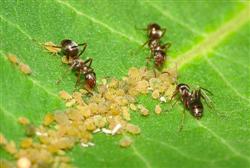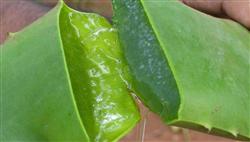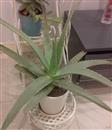Which insect pests need to be controlled in aloe culture?

Which insect pests need to be controlled in aloe culture? Please introduce and guide the control methods of aloe vera pests are red spiders, aphids, cotton bollworm, shell insects. These pests mainly harm the seedlings or tender leaves of aloe, and the occurrence quantity is small. First, red spiders and aphids: red spiders and aphids generally occur in spring, summer and autumn; when the number of insects is small, they can be washed with clean water or pinched to death with hands; they can also be sprayed with 2000 times of dimethoate, once every 3-4 days, and can be injected several times in a row. Helicoverpa armigera: Helicoverpa armigera is the most dangerous pest in aloe culture, causing serious harm. Helicoverpa armigera mainly bites young leaves and flowers, resulting in incomplete leaves and falling flowers; generally serious damage in July to September; when the larvae are mature, they are spun and drooped, buried in the soil to make cocoons and pupae, with a depth of 2.5 cm and 6 cm. It usually takes 35 to 45 days to complete a generation. Cotton bollworm control methods: 1, use black light or poplar forest to trap and kill adults. 2. Do a good job in the unity and coordination of other plants (such as cotton and corn) around the planting area. 3. Chemical control: spray control with 1000 times of 50% fenitrothion EC or 2000 times of 50% phoxim EC during the larval initial egg stage. 3. Scale insects: scale insects often stick to the back of the leaves as larvae, sometimes on the front of the leaves. When the larvae choose their habitat, they begin to lie still and form adults, and suck the leaf juice in one place for a long time. At the same time, a large amount of honey is discharged to pollute the leaves, resulting in soot disease. Because adults are crusts outside and are not easily touched by chemicals, there are fewer damaged leaves, so they can be crushed to death by manual killing. Or when it is serious, you can use 80% dichlorvos EC 800 times liquid, with a brush dipped in the liquid on the shell insects, it should be noted that the last use of the drug should not be less than 5 days from the harvest interval. Click to get more aloe culture techniques click to get more flower planting techniques
- Prev

How to cultivate edible aloe?
How to cultivate edible aloe? Please introduce in detail that the edible part of aloe is a succulent leaf with succulent juice, which is rich in nutrients. There are mainly a large number of B vitamins, cellulose, healing hormones, 11 kinds of free amino acids, 21 kinds of organic acids, molybdenum, zinc, germanium, boron and other 18 kinds of trace elements.
- Next

How to raise potted aloe in winter?
How to raise potted aloe in winter? Please introduce the method of potted aloe vera in winter. The lower the temperature, the greater the harm to aloe. When overwintering, you can refer to the following methods for cold protection management of aloe: set up a cold ditch: you can dig a rectangular hole in the sunny leeward yard.
Related
- Fuxing push coffee new agricultural production and marketing class: lack of small-scale processing plants
- Jujube rice field leisure farm deep ploughing Yilan for five years to create a space for organic food and play
- Nongyu Farm-A trial of organic papaya for brave women with advanced technology
- Four points for attention in the prevention and control of diseases and insect pests of edible fungi
- How to add nutrient solution to Edible Fungi
- Is there any good way to control edible fungus mites?
- Open Inoculation Technology of Edible Fungi
- Is there any clever way to use fertilizer for edible fungus in winter?
- What agents are used to kill the pathogens of edible fungi in the mushroom shed?
- Rapid drying of Edible Fungi

